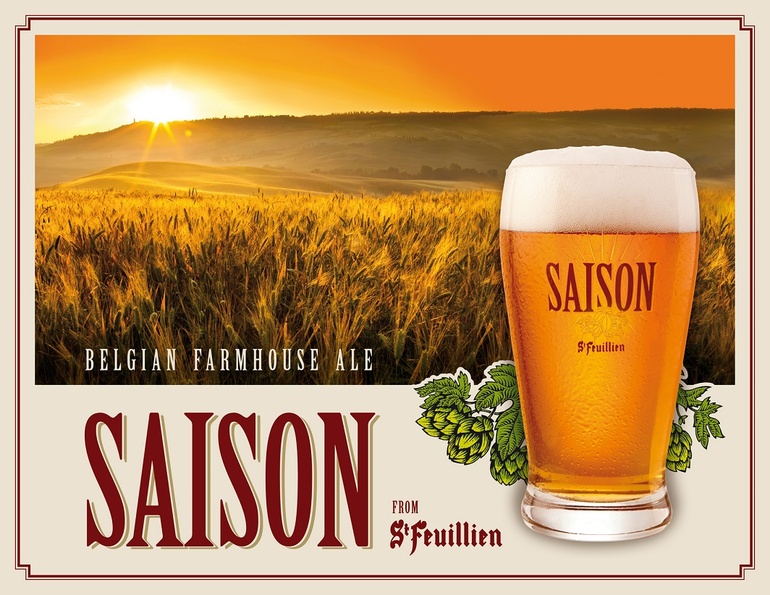Start 14-Day Trial Subscription
*No credit card required

Style Studies: Saison
Having grown up in an agriculturally-rich part of the country, I am not unfamiliar with the sights, sounds and smells of the farm. Contrary to the images (and aromas) this might tend to conjure up in the mind of the hardcore city-dweller, these sensory elements aren’t always the offensive ones – in fact, they’re often soothing, agreeable and even a little romantic in their own unpretentious way. If you’ve ever taken a stroll down a country road during a clear autumn evening or savored the smell of freshly cut field grass, you’ll know what I’m talking about. If you’ve been privileged enough to get your hands dirty in the rich earth and breathe in the black soil, you’ll be acquainted with the undeniable sentiment of complexity and depth clothed in the form of simplicity of which I speak.
A good saison is a lot like that.
No, it won’t give you dirty hands but it will evoke a wondrous array of sensory experiences in the discerning imbiber just like a visit to the farm elicits. In fact, this old beer style from Wallonia - the French-speaking region of Belgium – doesn’t just exhibit similar characteristics to the rustic romance of the farm; the most traditional examples of the style are still actually brewed in such places. Originally brewed only once a year, at the end of winter, for consumption throughout the hot summer months, saisons balance ample strength to survive long cellaring with an easy, refreshing drinkability. Although quite popular now, thanks in large part to the interest paid the style by the American craft beer industry in recent years, saisons were a somewhat endangered style for many years as only a handful of Wallonian farmhouse brewers consistently maintained the stylistic traditions. Today, saisons of various strengths and nuance can thankfully be found in many an artisanal brewer’s repertoire, regardless of geographical location.
Like the pragmatic charm a pastoral farm calls to mind, saisons are a study in the use of rather simple – and sometimes eclectic - components combined in such a manner as to create a harmonious whole greater than its individual parts. A simple mash of Pilsner malt is most common as the base grain, though Munich and/or Vienna malts are often added for flavor and color. Occasionally, wheat, spelt or other fermentable sugars (beet sugar, for instance) or honey are added, which helps thin the body of the beer and boost alcohol content. Noble hop varieties that introduce floral and earthy qualities are typical in saisons and brewers will occasionally add herbs or spices to further augment the flavor profile, particularly is the stronger versions of the style. The tell-tale yeast strain used in brewing a saison is highly-attenuating (meaning it eats a lot of sugar) and results in a decidedly dry, estery (fruity) and phenolic (spicy) ale with immense complexity and character.
In the glass, classic examples of saison tend to pour a pale to medium orange color, though some versions can exhibit a medium golden or even amber hue. Clarity in this beer style can range from crystal clear to semi-opaque as it is traditionally unfiltered. A dense, rocky white head with exceptional retention also typifies the style, fueled in part by very high carbonation.
Expect a predominantly fruity nose reminiscent of tart citrus with accompanying notes of wild flowers, pepper, hay and earth. Savory, rather than sweet, phenols are characteristic of the style and help differentiate the saison from many other Belgian beers and stand in stark contrast to the sweeter fruit and spice notes (banana and clove) indicative of Bavarian weisse beers.
Like the nose, fruit and spice dominate the palate with a mild malt background bringing the beer into harmony. Some tart or sour quality is fairly common as well, resulting from the hops or more likely an additional lactobacillus yeast strain added during maturation. Some brewers will use a sour mash or gypsum to accomplish this result.
These characteristics, along with a light to medium body, coalesce to create a decidedly clean, dry and refreshing finish with high levels of carbonation leaving a pleasing effervescence with lingering spiciness. True to their origins and function, traditional saisons don’t sit heavy on the palate or demonstrate any discernable alcoholic “heat.”
Saisons are not your typical Belgian beers, but then “typical” seldom applies to Belgian beers in the first place. If by typical, however, somewhat sweeter and lesser hopped beers come to mind, then saisons certainly stand in bold contrast to this generalization. Sometimes summed up as a little funky, earthy or possessing an inimitable “barnyard” quality, saisons are a product of their environment and a testament to the masterful simplicity and deceptive complexity of the farms from whence they originated.
Saison Stats: O.G: 1.048 – 1.065, IBUs:20-35, SRM: 5-14, ABV: 5-7%
Commercial Examples: Brasserie Dupont Saison Dupont, Fantôme Saison, Jolly Pumpkin Bam Bière, Ommegang Hennepin.



